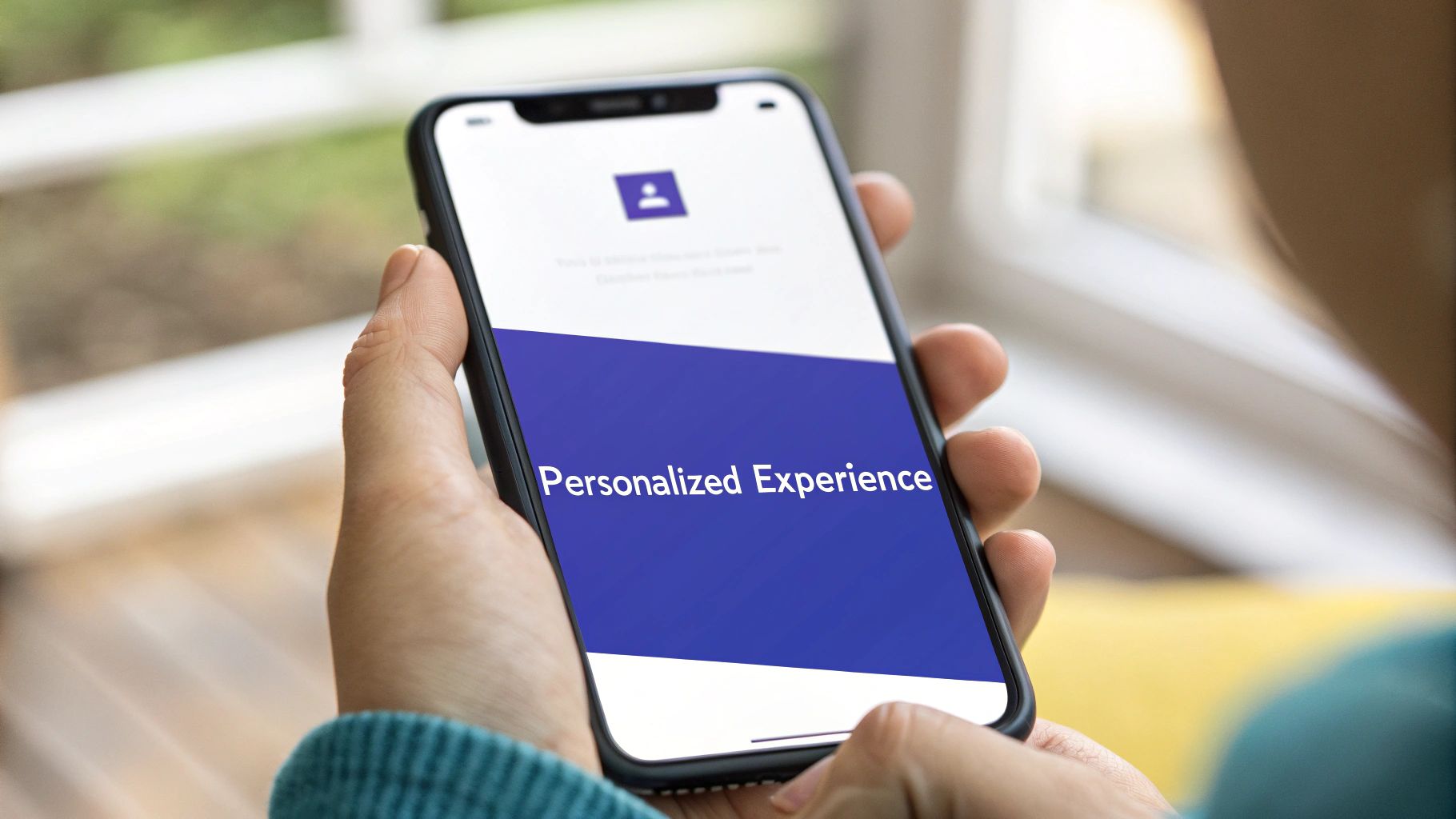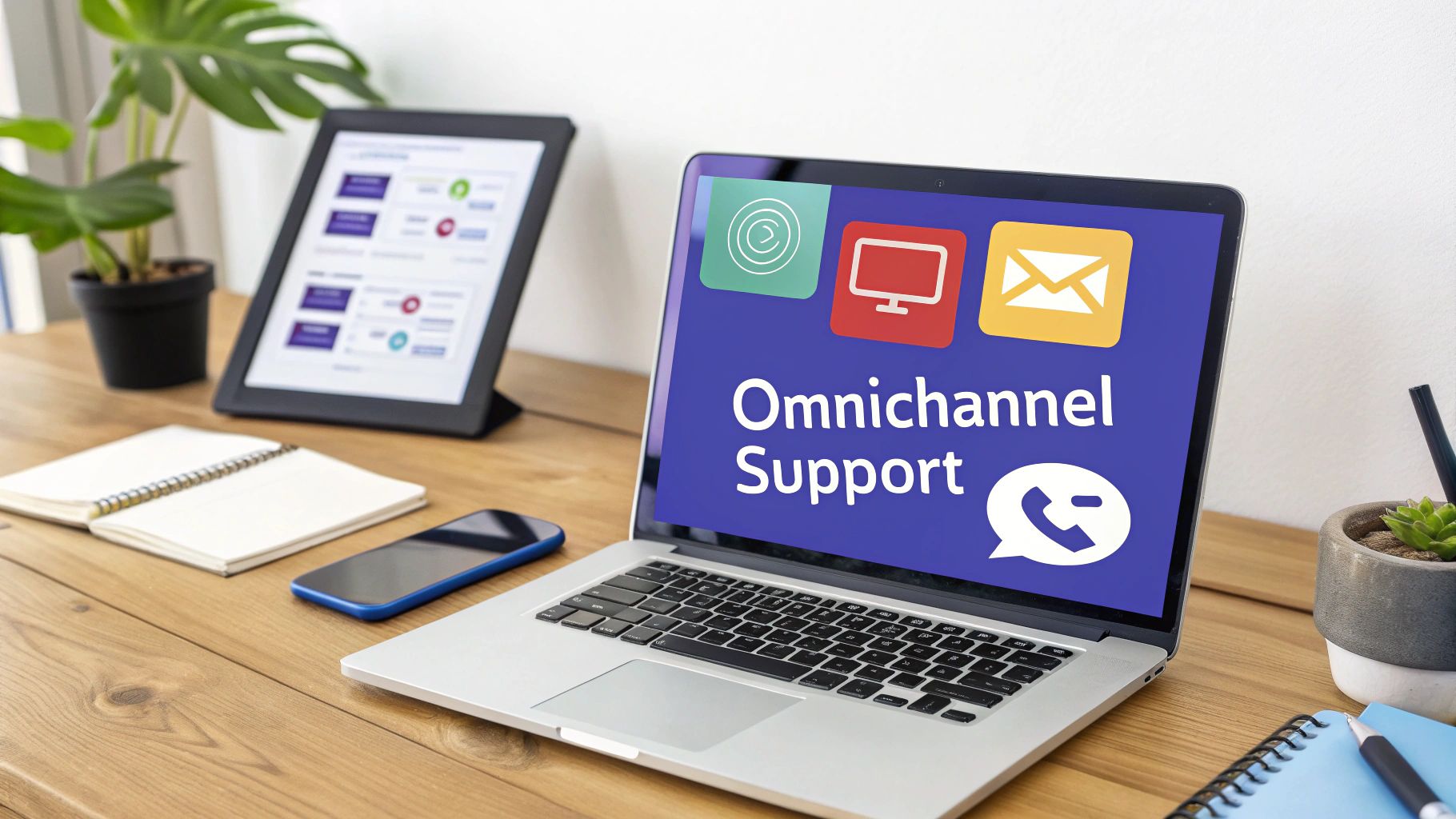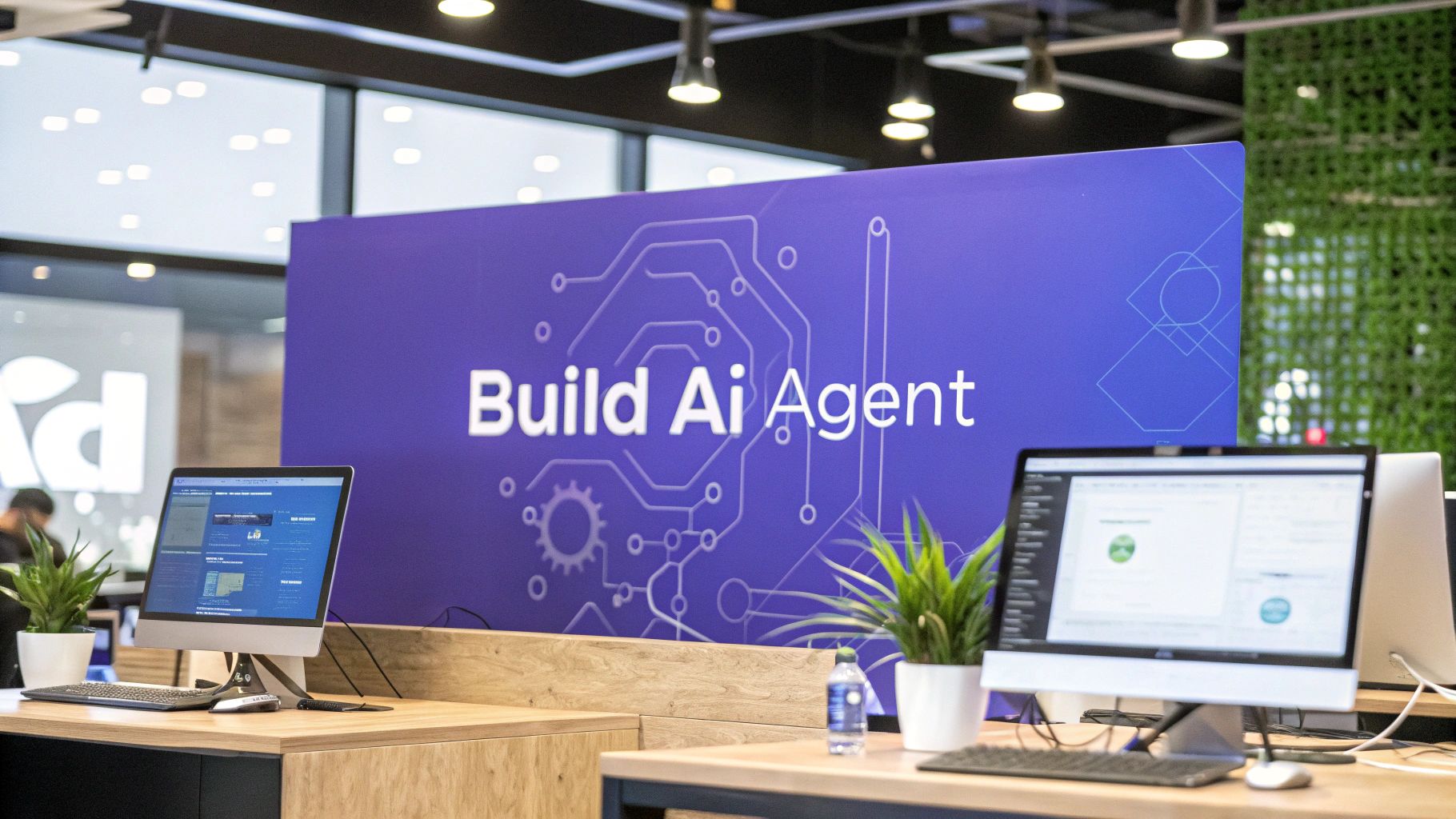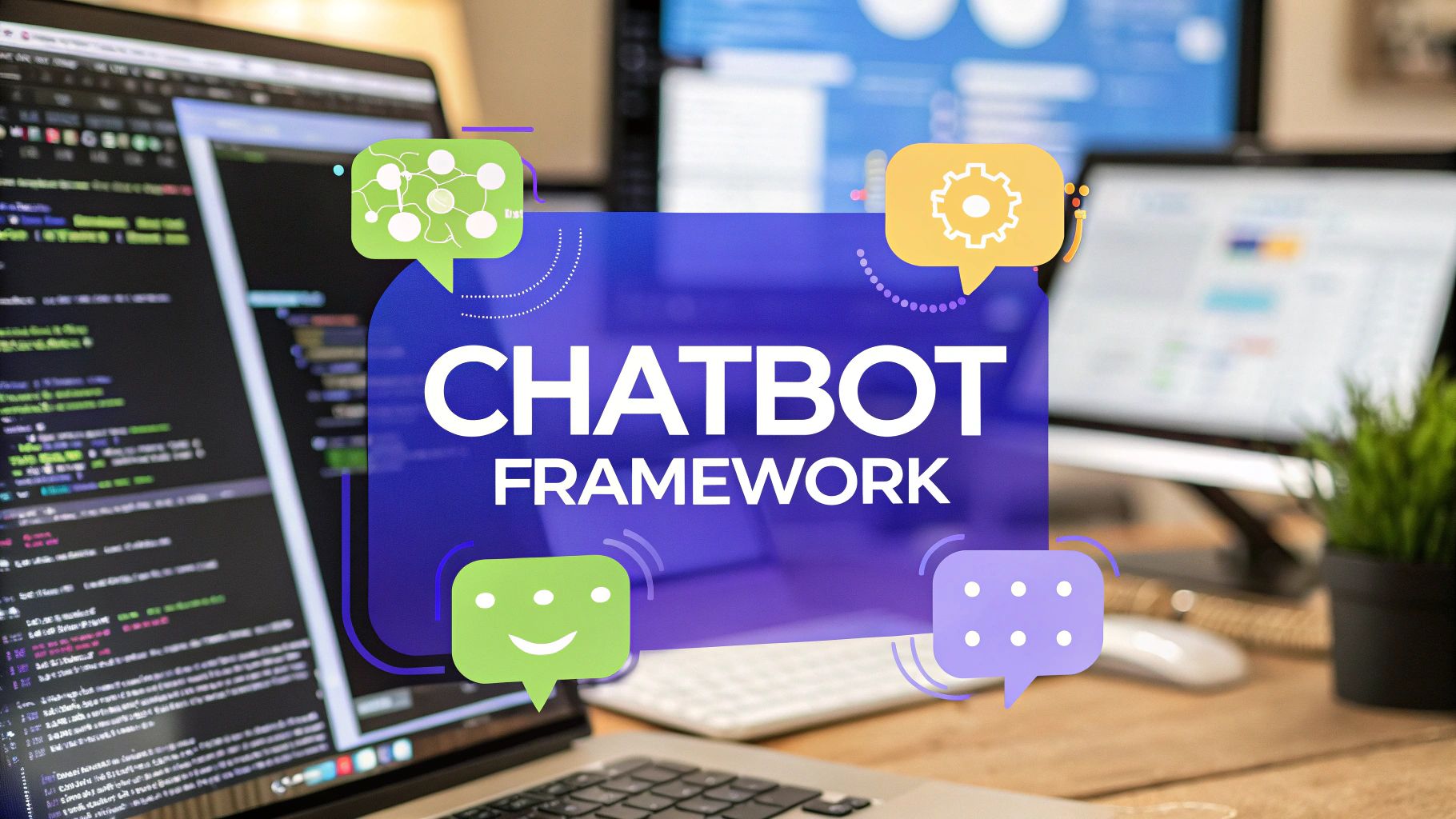7 Proven Strategies to Reduce Customer Churn in 2025
Discover 7 expert-backed strategies to reduce customer churn. Learn how AI chatbots, analytics, and personalization can boost retention and loyalty.

Customer churn is the silent killer of growth. In today's competitive landscape, simply acquiring new customers is not enough; you need a robust, modern strategy to keep the ones you have already earned. The cost of acquiring a new customer is consistently higher than retaining an existing one, making efforts to reduce customer churn a critical priority for sustainable success. But the old, reactive methods are no longer sufficient.
The key to thriving in 2025 is to move from reactive problem-solving to proactive, data-driven engagement. This means using powerful tools like AI chatbots, predictive analytics, and deep personalization to anticipate customer needs and deliver exceptional value before they even think of leaving. A low churn rate is a direct indicator of customer satisfaction and a strong predictor of long-term profitability.
In this guide, we will break down seven powerful, actionable strategies you can implement to not just fight churn, but to build a loyal customer base that champions your brand. We will explore how to automate proactive outreach and provide seamless, omnichannel support, turning potential churn risks into opportunities for growth and deeper customer relationships. Let's get started.
1. Proactive Customer Success Management
Waiting for customers to report problems is a surefire way to increase churn. Proactive Customer Success Management (CSM) flips this script entirely. Instead of reacting to issues, this strategy focuses on ensuring customers consistently achieve their desired outcomes with your product, preemptively addressing challenges before they even surface. It's a fundamental shift from a reactive support model to a forward-thinking partnership that is crucial to reduce customer churn.

Pioneered by thought leaders like Lincoln Murphy and popularized by platforms like Gainsight, this approach uses data analytics to monitor customer health. By tracking usage patterns, feature adoption, and engagement levels, you can identify customers who are at risk of churning long before they decide to leave. This allows your team to intervene with targeted, valuable assistance that reinforces the value of your solution.
How to Implement Proactive CSM
Implementing a proactive CSM strategy involves building a structured system to monitor, engage, and guide your customers toward success.
- Define Success Milestones: Work with customers to establish clear goals and key performance indicators (KPIs) they want to achieve. This creates a shared definition of success and a roadmap for their journey.
- Automate Usage Alerts: Set up automated triggers that notify your CSM team when a customer's product usage drops significantly or when they fail to adopt key features. This is your early warning system.
- Tier Your Engagement: Not all customers require the same level of attention. Create tiered success programs based on customer value (e.g., ARR, strategic importance) to allocate your resources effectively. High-value accounts might get a dedicated CSM, while smaller accounts could be managed through automated email sequences and webinars.
A prime example is Salesforce, which uses its Trailhead learning platform to proactively educate users, ensuring they get the most out of the complex CRM. Similarly, Slack's renowned customer success initiatives have been credited with achieving near-perfect retention rates by ensuring teams are onboarded effectively and using the platform to its full potential.
2. Personalized Customer Experience
Generic, one-size-fits-all interactions are a leading cause of customer indifference and eventual churn. A Personalized Customer Experience moves beyond broad segmentation to treat each user as an individual. This strategy leverages customer data, behavioral analytics, and AI to customize everything from product recommendations and marketing messages to the timing and channel of communications. This tailored approach makes customers feel seen and understood, which is a powerful way to reduce customer churn.

Pioneered by giants like Amazon and Netflix, and powered by technologies from companies like Adobe and Salesforce, this approach transforms customer data into meaningful, relevant experiences. By analyzing purchase history, browsing behavior, and product usage, you can anticipate needs and offer solutions that resonate on a personal level. This deepens the customer relationship and reinforces the value of your brand in their daily lives. For more insights on this topic, you can learn more about effective customer engagement strategies on chatiant.com.
How to Implement a Personalized Experience
Creating a truly personalized experience requires a systematic approach to collecting, analyzing, and acting on customer data.
- Start with Behavioral Triggers: Begin with simple yet effective personalization. For example, send a targeted email with a tutorial video when a user engages with a new feature for the first time, or offer a discount on a product they viewed multiple times.
- Ensure Data Transparency: Personalization requires data, but customers demand privacy. Be transparent about what data you collect and how you use it to improve their experience. Provide clear opt-out options to build trust.
- Balance Automation with Human Touch: While AI can power personalization at scale, it's crucial to know when a human touchpoint is needed. Use automation for routine interactions but empower your team to handle complex, high-emotion situations personally.
Netflix famously leverages its recommendation algorithm to keep users engaged, reportedly reducing churn by a significant margin. Similarly, Spotify’s "Discover Weekly" playlists are a masterclass in personalization, using listening habits to deliver a uniquely curated experience that fosters immense loyalty and keeps subscribers coming back.
3. Value-Based Pricing and Packaging
Pricing is more than just a number; it's a direct reflection of the value your product delivers. A rigid, one-size-fits-all pricing model can alienate customers who feel they are overpaying for unused features or under-served by a plan that doesn't meet their needs. Value-based pricing and packaging directly addresses this by aligning the cost of your service with the tangible value and outcomes customers receive, making it a powerful strategy to reduce customer churn.

This strategic approach, championed by figures like Patrick Campbell of ProfitWell and exemplified by industry giants, moves away from cost-plus or competitor-based models. Instead, it focuses on understanding what customers value most and structuring tiers, features, and billing cycles around that perception. By ensuring customers pay for what they truly use and value, you build a fairer, more sustainable relationship that grows with them, not against them.
How to Implement Value-Based Pricing
Implementing value-based pricing requires a deep understanding of your customer segments and the specific outcomes they seek from your product.
- Conduct Regular Pricing Analysis: Don't set your prices and forget them. Use customer surveys, interviews, and market analysis to continuously gauge how customers perceive your product's value and what they are willing to pay for it.
- Offer Clear, Incentivized Upgrade Paths: Design your pricing tiers so that as a customer's needs grow, upgrading is a logical and attractive next step. Offer clear benefits for each tier and consider providing incentives for moving up, ensuring the transition is seamless.
- Use A/B Testing for Optimization: Test different pricing structures, price points, and feature packages with different segments of your audience. This data-driven approach helps you find the optimal balance between customer value and revenue generation.
- Implement Grandfather Clauses: When changing prices, honor the original pricing for existing, loyal customers. This simple act of goodwill builds immense trust and prevents churn from customers who feel blindsided by unexpected price hikes.
A classic example is Salesforce's multi-tier cloud strategy, which allows businesses of all sizes to find a plan that fits their specific needs and budget. Similarly, Amazon Web Services (AWS) revolutionized the industry with its pay-as-you-go model, removing high entry barriers and allowing customers to scale their costs directly with their usage, a core tenet of value-based delivery. HubSpot's freemium model is another masterful execution, drawing users in with genuine value and providing a natural progression to premium tiers as their business grows.
4. Predictive Churn Analytics
Moving beyond reactive measures, Predictive Churn Analytics is a data-driven strategy that uses machine learning algorithms and statistical models to forecast which customers are most likely to leave. This approach analyzes vast datasets, including historical interactions, behavioral patterns, and engagement metrics, to create a predictive score for each customer. By identifying high-risk accounts before they disengage, you can launch targeted intervention campaigns designed to reduce customer churn and retain valuable revenue.

This powerful technique has been championed by data-centric platforms like Salesforce Einstein Analytics and Microsoft Azure Machine Learning. It enables businesses to shift from guesswork to data science, allocating retention resources with precision. Instead of treating all customers the same, you can focus your efforts on those who are statistically proven to be on the verge of churning, maximizing the impact of your retention efforts.
How to Implement Predictive Churn Analytics
Building an effective predictive model requires a systematic approach to data collection, analysis, and action.
- Combine Multiple Behavioral Indicators: Don't rely on a single data point. Integrate various metrics like login frequency, feature adoption rates, support ticket volume, and even sentiment analysis from customer communications to build a comprehensive risk profile.
- Start with Simple Models: You don't need a complex deep learning algorithm from day one. Begin with simpler models like logistic regression to identify key churn drivers. As your data and expertise grow, you can advance to more sophisticated machine learning techniques.
- Focus on Actionable Insights: A highly accurate model is useless if it doesn't lead to action. Ensure your model's outputs are easily understandable and provide clear signals for your customer success or marketing teams to act upon, such as triggering a special offer or a proactive check-in call.
- Regularly Validate and Retrain Models: Customer behavior changes over time. Continuously feed new data into your models and retrain them regularly to maintain their accuracy and relevance.
A prime example is Verizon, which reportedly used predictive analytics to identify at-risk customers and reduce churn by as much as 30% through proactive engagement. Similarly, Spotify’s machine learning models analyze listening habits to predict potential churn with high accuracy, allowing them to personalize user experiences and offers to keep subscribers engaged.
5. Omnichannel Customer Support Excellence
Customers today expect to interact with your brand on their own terms, switching between email, live chat, social media, and phone calls without skipping a beat. Omnichannel Customer Support Excellence meets this demand by creating a unified, seamless support experience across all these channels. This strategy integrates your communication touchpoints, ensuring conversation history and customer context are maintained, so agents can provide consistent, high-quality assistance no matter how a customer reaches out. This consistency is a powerful tool to reduce customer churn.
This customer-centric approach was championed by brands like Zappos, whose legendary service culture proved that exceptional support drives loyalty. Modern platforms like Zendesk have made this level of integration accessible, allowing businesses to centralize customer interactions and data. The goal is to eliminate the frustration of repeating information, ensuring customers feel known and valued, which directly impacts their decision to stay with your brand.
How to Implement Omnichannel Support
Building a true omnichannel system requires more than just being present on multiple channels; it demands deep integration and a commitment to a unified customer view.
- Integrate Communication Channels: Use a central help desk or CRM platform that consolidates conversations from all channels into a single customer profile. This gives support agents full context on every interaction.
- Implement Customer Feedback Loops: After a support interaction, automatically send a satisfaction survey (like CSAT or NPS) to gather immediate feedback. Use this data to identify friction points and areas for agent coaching.
- Balance Automation with Human Touch: Employ customer support automation with AI-powered chatbots to handle common, repetitive queries instantly. Crucially, ensure there is always a clear and simple path for customers to escalate to a human agent for complex or sensitive issues.
- Focus on First-Contact Resolution (FCR): Train and empower your support staff to resolve issues during the first interaction. Track FCR as a key metric, as solving problems quickly and efficiently is a major driver of customer satisfaction and retention.
A stellar example is Apple's integrated support ecosystem. A customer can start a chat on their iPhone, schedule an in-person Genius Bar appointment from that chat, and arrive at the store to find the technician already briefed on their issue. This seamless journey turns a potentially frustrating problem into a positive brand experience, reinforcing customer loyalty.
6. Customer Loyalty Programs and Incentives
Creating a transactional relationship is easy, but fostering genuine loyalty requires giving customers a compelling reason to stay. Customer loyalty programs and incentives are structured systems designed to reward repeat business and deepen emotional connection. By offering tangible benefits like points, exclusive discounts, and special access, these programs increase the perceived value of your brand and create significant switching costs, making it harder for competitors to lure your customers away. This is a classic yet powerful strategy to reduce customer churn.
Pioneered in the modern era by American Airlines with its frequent flyer program and later perfected in the digital space by innovators like Amazon and Starbucks, these programs transform one-time buyers into long-term advocates. They work by creating a positive feedback loop: the more a customer engages, the more they are rewarded, which in turn encourages further engagement. This strategy directly addresses churn by making the alternative, starting over with a new brand, financially and emotionally less appealing.
How to Implement Loyalty Programs
Building an effective loyalty program goes beyond simply handing out discounts. It requires a thoughtful design that aligns with your customers' values and your business goals.
- Design Rewards That Align with Customer Values: Don't just offer generic discounts. Use customer data to understand what truly motivates your audience. Is it early access to new products, exclusive content, or personalized service? Tailor your rewards to what they find most valuable.
- Make Benefits Easy to Understand and Redeem: Complexity is the enemy of engagement. Your program's rules, point system, and redemption process should be simple and transparent. If customers have to jump through hoops to claim a reward, they won't bother.
- Use Data to Personalize the Experience: Leverage analytics to offer personalized rewards and communications. Acknowledging a customer's birthday with bonus points or suggesting a reward based on their purchase history makes them feel seen and valued. This level of personalization can be integrated with data gathered during the initial customer journey, which you can learn more about in our guide to customer onboarding automation.
Starbucks Rewards is a masterclass in this approach, with its seamless app-based system driving over 40% of the company's revenue. Similarly, Sephora's Beauty Insider program boasts over 25 million members who feel part of an exclusive community, demonstrating how well-executed loyalty initiatives can build an unshakeable customer base.
7. Regular Product Innovation and Updates
A stagnant product is a magnet for churn. When your solution fails to evolve, customers will eventually find a more modern, feature-rich alternative that better meets their growing needs. Regular Product Innovation and Updates is the strategy of continuously improving your product to keep it fresh, relevant, and indispensable. This approach is essential to reduce customer churn by consistently delivering new value and demonstrating a commitment to your customers' long-term success.
This strategy prevents your product from becoming a commodity and keeps you ahead of competitor offerings. By showing customers that you are actively investing in the solution they rely on, you reinforce their decision to choose you and give them compelling reasons to stay. It transforms your product from a static tool into a dynamic, evolving platform that grows alongside their business.
Pioneered by tech giants like Apple and adopted as a core tenet of the Software-as-a-Service (SaaS) model by companies like Microsoft with its Office 365 suite, this approach focuses on iterative enhancement. It's not about massive, infrequent overhauls but a steady stream of valuable improvements, bug fixes, and new features that enhance the user experience and expand the product's capabilities.
How to Implement Regular Product Innovation
Implementing a cycle of continuous innovation requires a structured process that aligns product development with customer needs and market trends.
- Prioritize Customer-Requested Features: Actively solicit and analyze feedback through surveys, support tickets, and community forums. Use this data to create a product roadmap that directly addresses the most common and impactful customer requests.
- Maintain Clear Communication: Don't ship updates in a vacuum. Use in-app notifications, email newsletters, and public roadmaps to inform customers about what’s coming and when. This builds anticipation and manages expectations.
- Provide Comprehensive Training: When new features are released, ensure users know how to leverage them. Create blog posts, video tutorials, and documentation to guide users, ensuring new functionality leads to immediate value rather than confusion.
- Balance Innovation with Stability: While new features are exciting, they should never come at the cost of core product stability. Rigorous quality assurance and beta testing are critical to ensure that updates enhance, rather than disrupt, the user experience.
A prime example is Tesla's over-the-air software updates, which regularly add new driving features, entertainment options, and performance improvements to its vehicles, delighting customers long after the initial purchase. Similarly, Adobe's move to the Creative Cloud model allows it to constantly release new AI-powered tools and workflow enhancements, keeping its software at the cutting edge and justifying its subscription fee.
7 Key Strategies to Reduce Customer Churn Comparison
Turning Insights into Action to Eliminate Churn
Navigating the complex challenge of customer retention requires more than a reactive, problem-solving mindset. The battle to reduce customer churn is ultimately won through a deliberate, proactive, and deeply integrated strategy. The seven pillars we've explored, from proactive customer success management to continuous product innovation, are not isolated tactics to be deployed in a vacuum. Instead, they form a powerful, interconnected ecosystem designed to build lasting customer loyalty and insulate your business against attrition.
At its core, this ecosystem is built on a single, powerful principle: consistently delivering overwhelming and undeniable value. Each strategy serves this goal. Predictive analytics allows you to anticipate needs before they become problems. Personalized experiences, powered by AI and thoughtful segmentation, make customers feel seen and understood. Omnichannel support ensures that help is always accessible, seamless, and effective, no matter the channel.
From Strategy to Execution: Your Next Steps
The journey from high churn rates to a resilient, loyal customer base begins with a single, committed step. Simply reading about these strategies is not enough; the true value is unlocked through implementation and iteration. To avoid becoming overwhelmed, focus on a phased approach.
Here are actionable next steps you can take today:
- Conduct a Churn Autopsy: Start by analyzing your recently churned customers. Identify common patterns. Were they disengaged? Did they underutilize key features? Did they encounter specific support issues? This data will reveal your most significant vulnerabilities and help you prioritize which strategy to implement first.
- Implement a "Quick Win" Initiative: Select one or two of the most accessible strategies for your team. This could be launching a simple loyalty program that rewards long-term customers or deploying an AI chatbot to handle common, after-hours support queries. A quick win will build momentum and demonstrate immediate value to your organization.
- Establish Key Retention Metrics: You cannot improve what you do not measure. Define and track critical KPIs beyond just the churn rate itself. Monitor Customer Lifetime Value (CLV), Net Promoter Score (NPS), and feature adoption rates. These metrics will provide a much richer picture of customer health and the impact of your efforts to reduce customer churn.
The Ultimate Goal: Building an Unbreakable Customer Bond
Mastering these concepts transforms your business from a transactional provider into an indispensable partner. When you actively manage success, price based on value, and innovate based on feedback, you create a powerful competitive moat. Customers stay not because of contractual obligations, but because the value you provide makes leaving a non-starter. This approach shifts your focus from merely preventing churn to actively fostering advocacy. A loyal customer base becomes your most effective marketing engine, driving referrals and sustainable growth. The investment in these retention strategies pays dividends far beyond just a lower churn rate; it builds a foundation for a resilient, customer-centric, and market-leading business.
Ready to transform your customer support and proactively engage users to reduce customer churn? Explore how Chatiant can help you deploy intelligent, AI-powered chatbots across your website, Slack, and Google Chat to provide instant, personalized assistance 24/7. Start building stronger customer relationships and turn your support center into a retention powerhouse with Chatiant.


